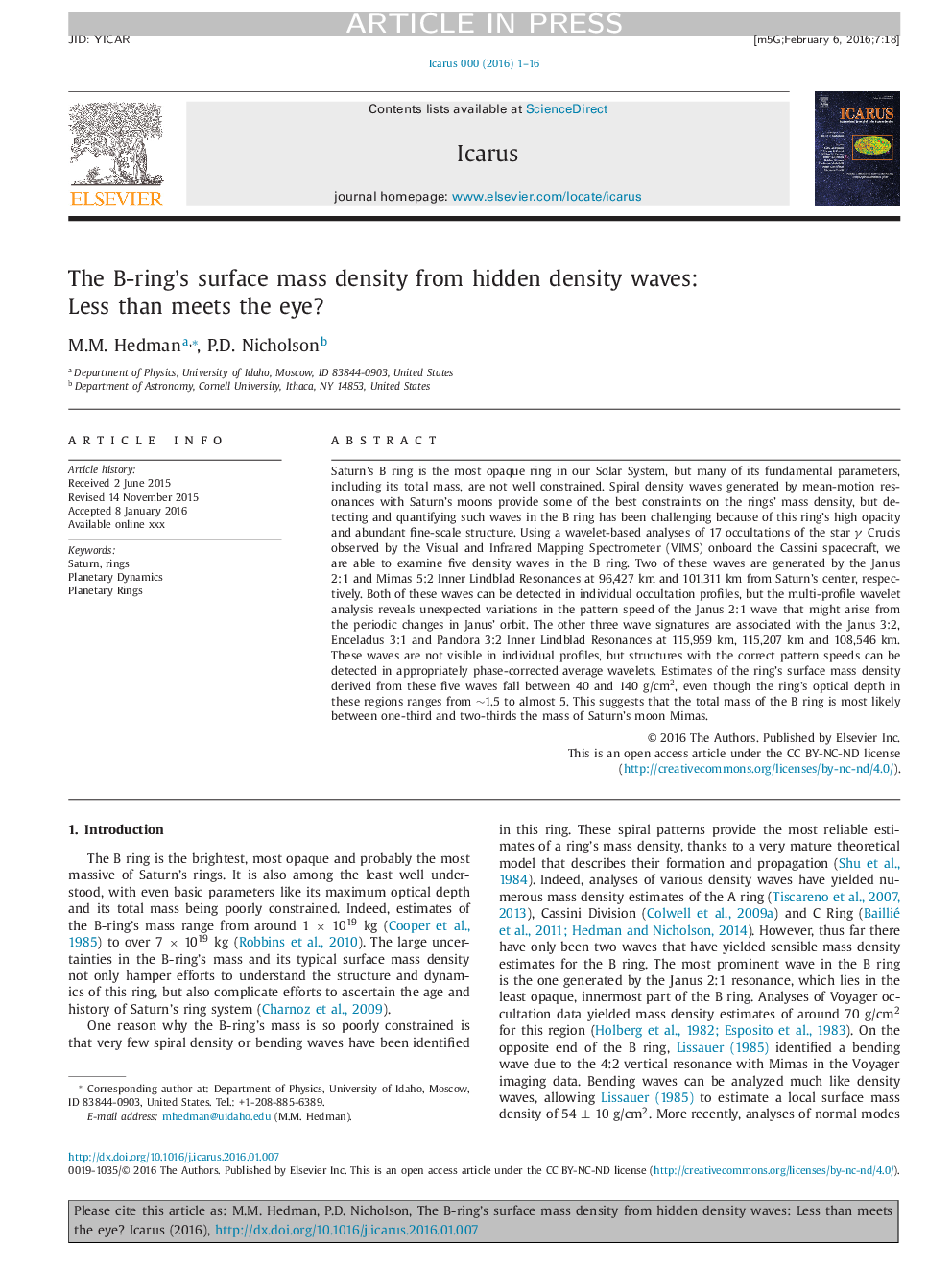| کد مقاله | کد نشریه | سال انتشار | مقاله انگلیسی | نسخه تمام متن |
|---|---|---|---|---|
| 8134784 | 1523511 | 2016 | 16 صفحه PDF | دانلود رایگان |
عنوان انگلیسی مقاله ISI
The B-ring's surface mass density from hidden density waves: Less than meets the eye?
دانلود مقاله + سفارش ترجمه
دانلود مقاله ISI انگلیسی
رایگان برای ایرانیان
کلمات کلیدی
موضوعات مرتبط
مهندسی و علوم پایه
علوم زمین و سیارات
علوم فضا و نجوم
پیش نمایش صفحه اول مقاله

چکیده انگلیسی
Saturn's B ring is the most opaque ring in our Solar System, but many of its fundamental parameters, including its total mass, are not well constrained. Spiral density waves generated by mean-motion resonances with Saturn's moons provide some of the best constraints on the rings' mass density, but detecting and quantifying such waves in the B ring has been challenging because of this ring's high opacity and abundant fine-scale structure. Using a wavelet-based analyses of 17 occultations of the star γ Crucis observed by the Visual and Infrared Mapping Spectrometer (VIMS) onboard the Cassini spacecraft, we are able to examine five density waves in the B ring. Two of these waves are generated by the Janus 2:1 and Mimas 5:2 Inner Lindblad Resonances at 96,427 km and 101,311 km from Saturn's center, respectively. Both of these waves can be detected in individual occultation profiles, but the multi-profile wavelet analysis reveals unexpected variations in the pattern speed of the Janus 2:1 wave that might arise from the periodic changes in Janus' orbit. The other three wave signatures are associated with the Janus 3:2, Enceladus 3:1 and Pandora 3:2 Inner Lindblad Resonances at 115,959 km, 115,207 km and 108,546 km. These waves are not visible in individual profiles, but structures with the correct pattern speeds can be detected in appropriately phase-corrected average wavelets. Estimates of the ring's surface mass density derived from these five waves fall between 40 and 140 g/cm2, even though the ring's optical depth in these regions ranges from â¼1.5 to almost 5. This suggests that the total mass of the B ring is most likely between one-third and two-thirds the mass of Saturn's moon Mimas.
ناشر
Database: Elsevier - ScienceDirect (ساینس دایرکت)
Journal: Icarus - Volume 279, 15 November 2016, Pages 109-124
Journal: Icarus - Volume 279, 15 November 2016, Pages 109-124
نویسندگان
M.M. Hedman, P.D. Nicholson,